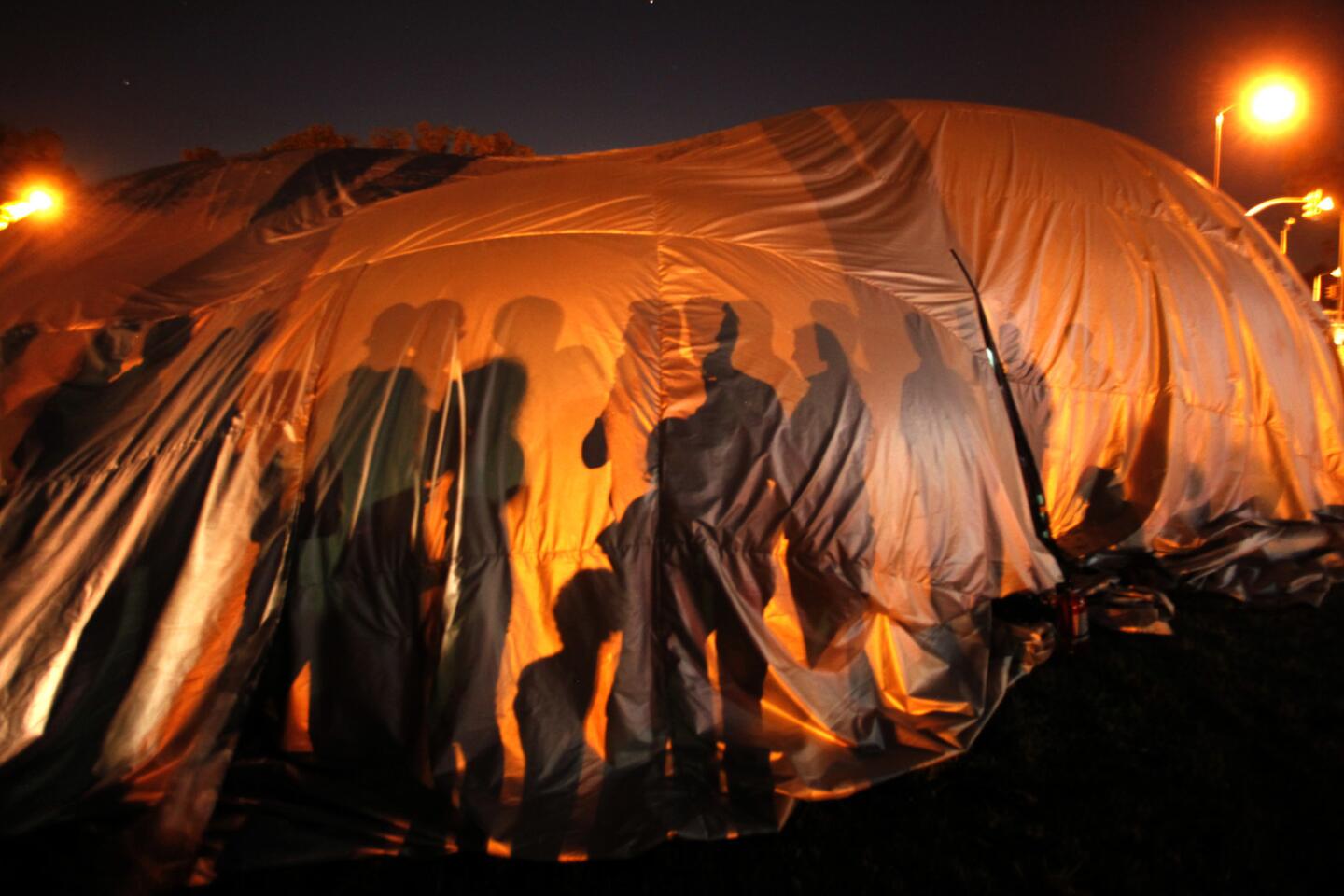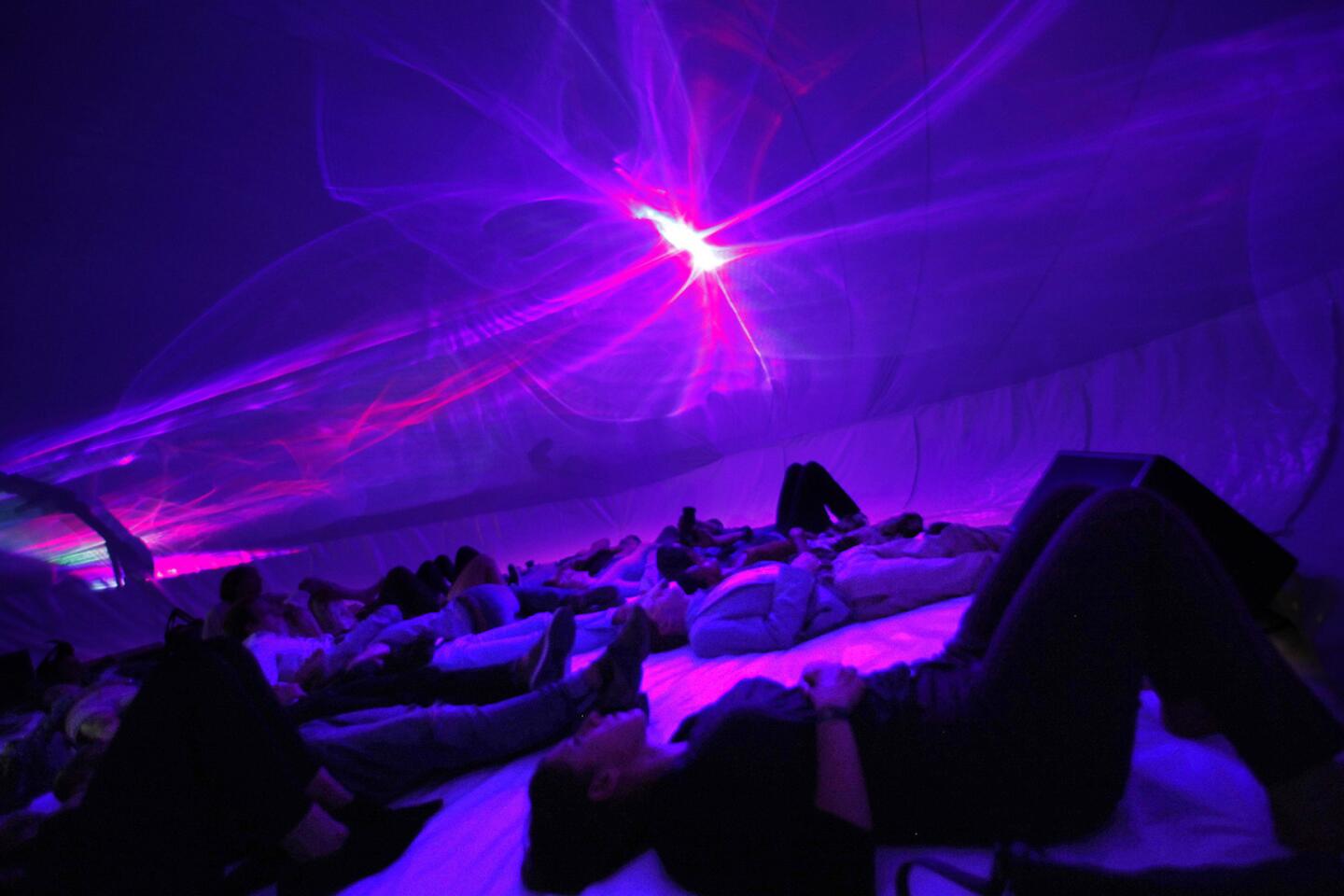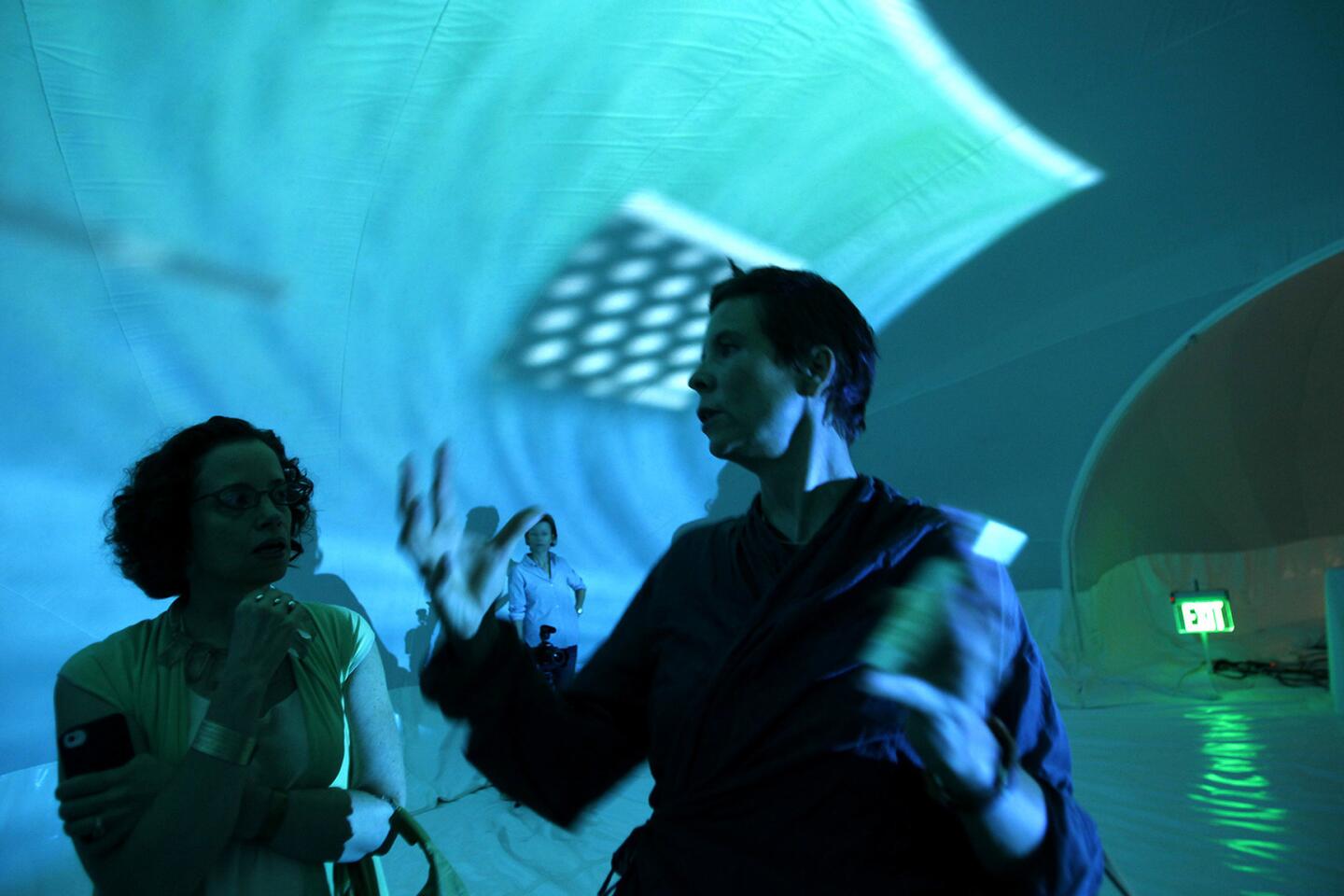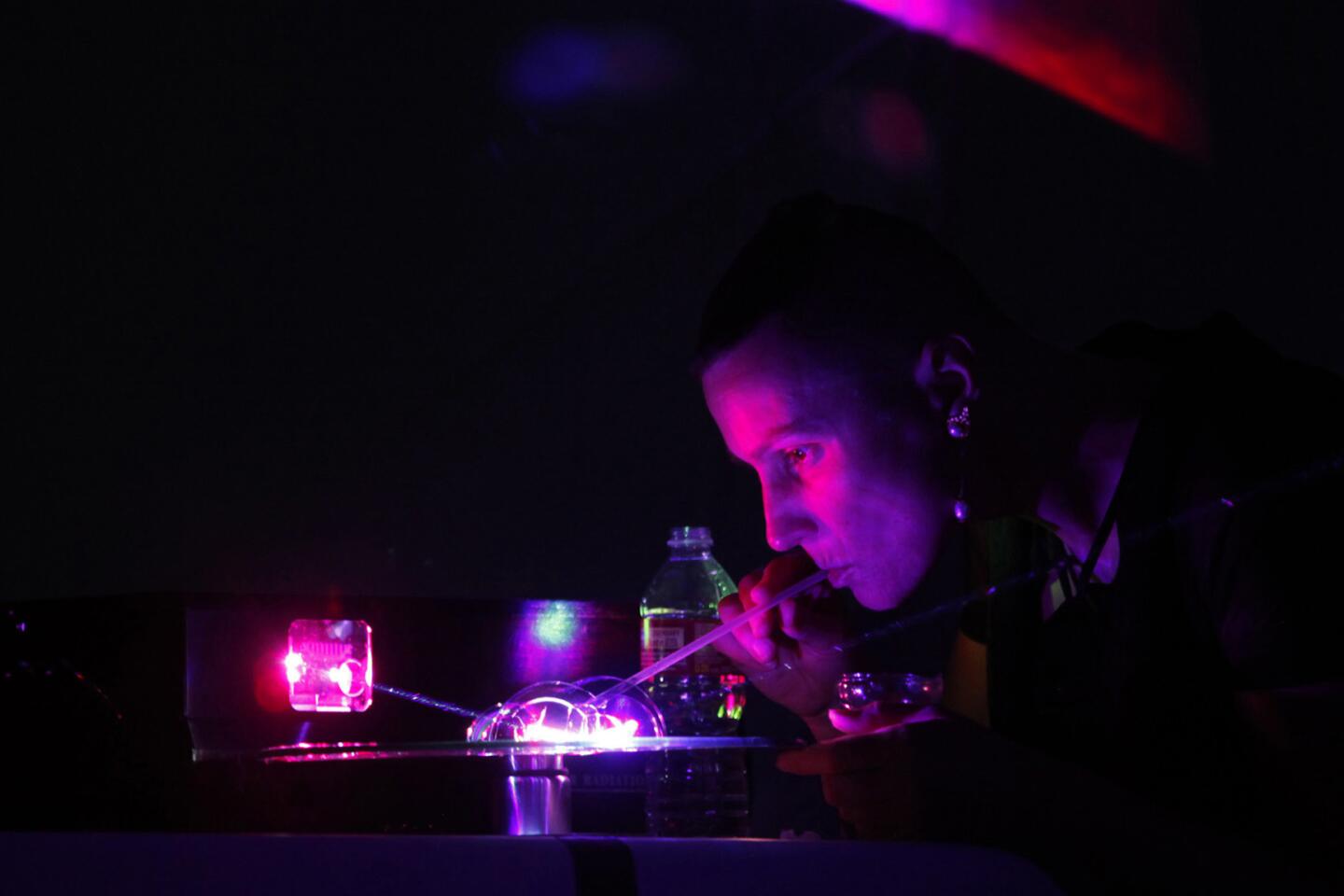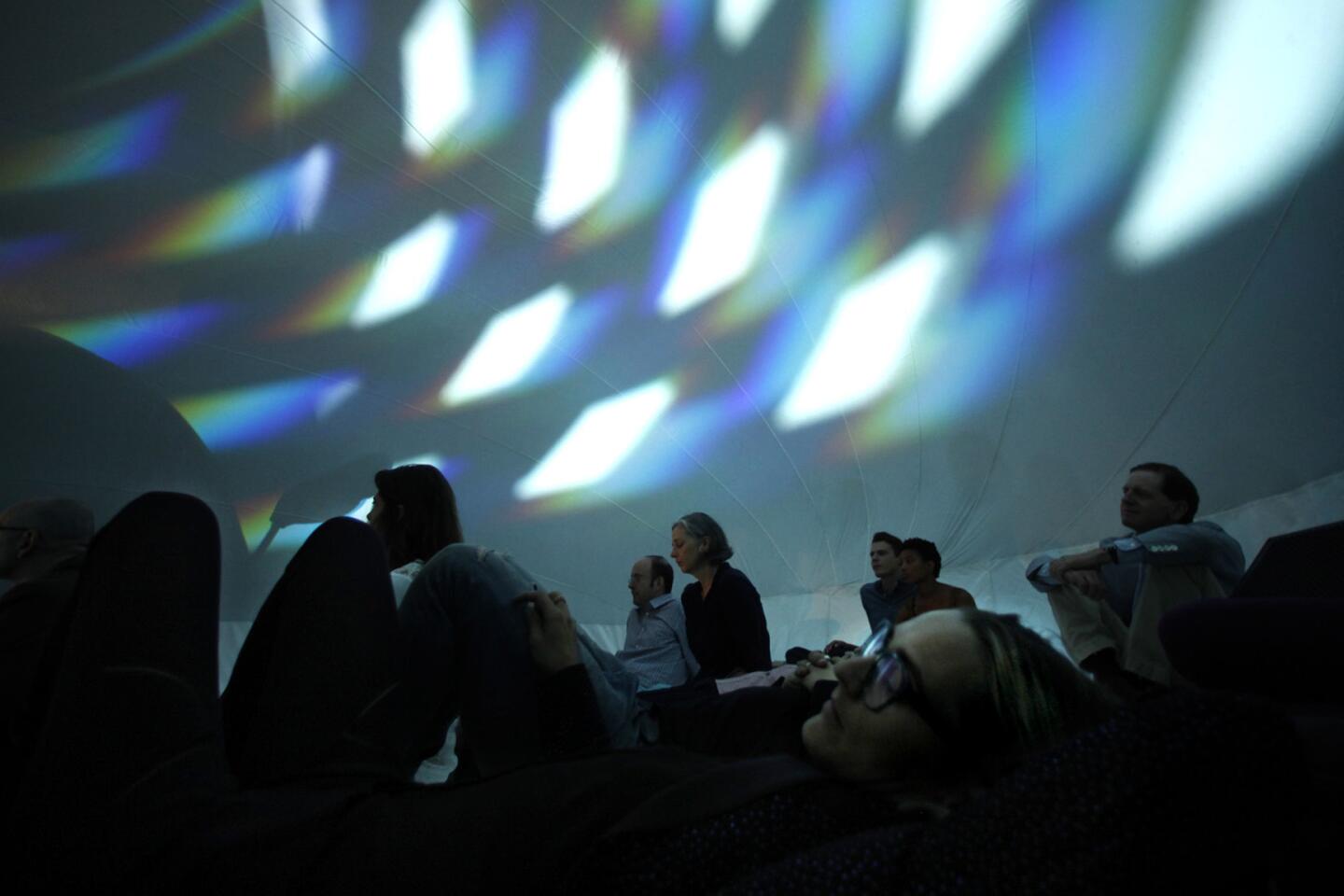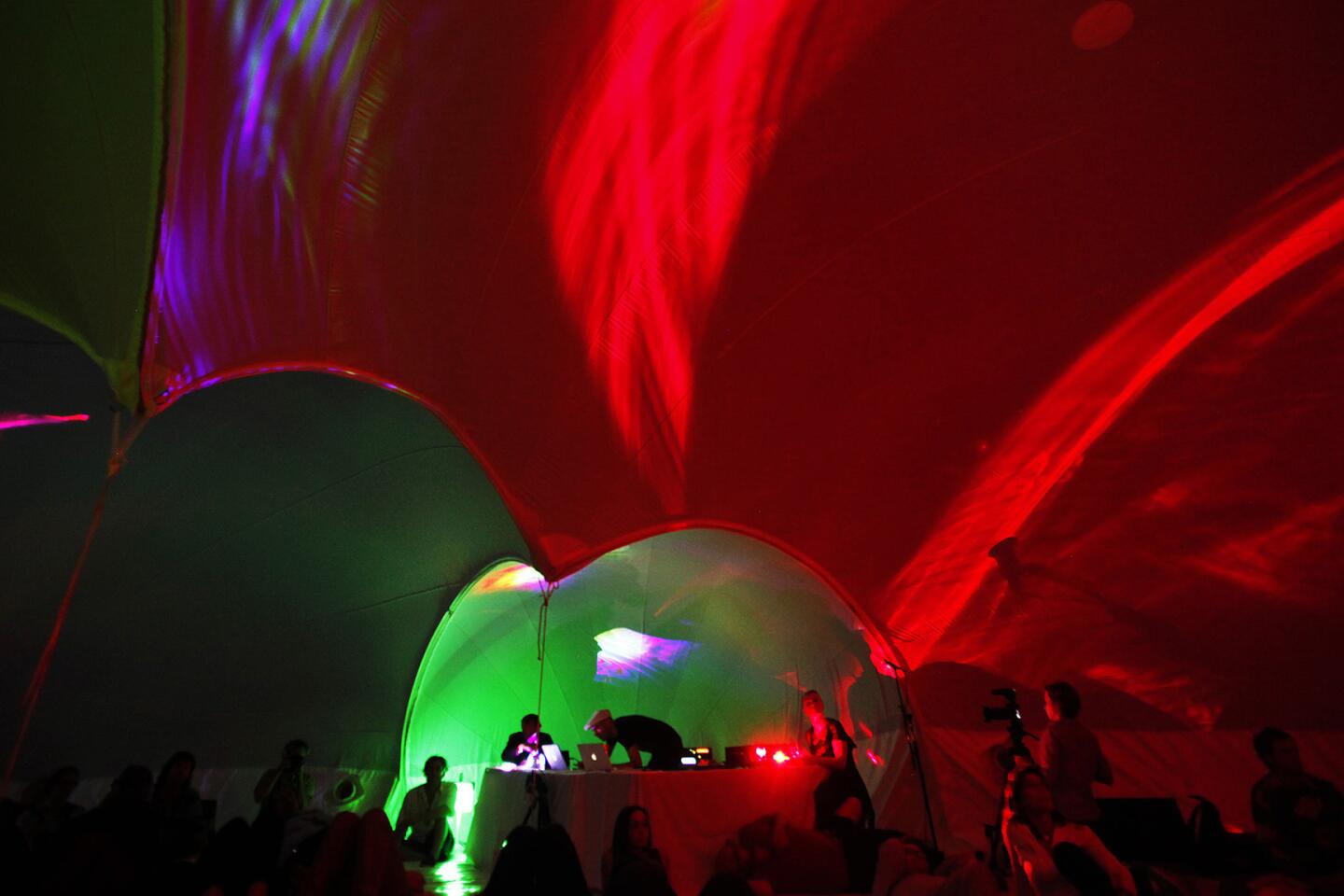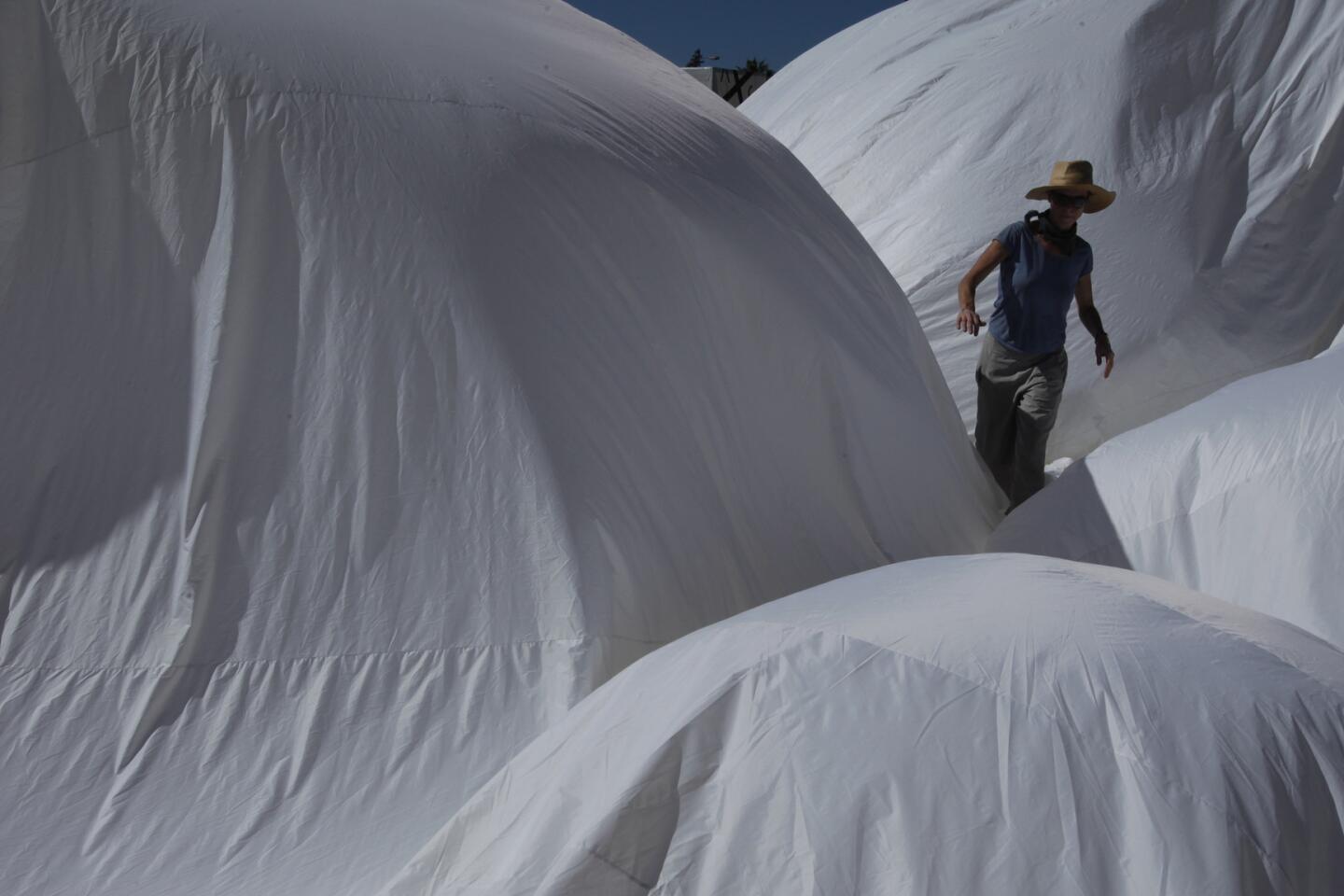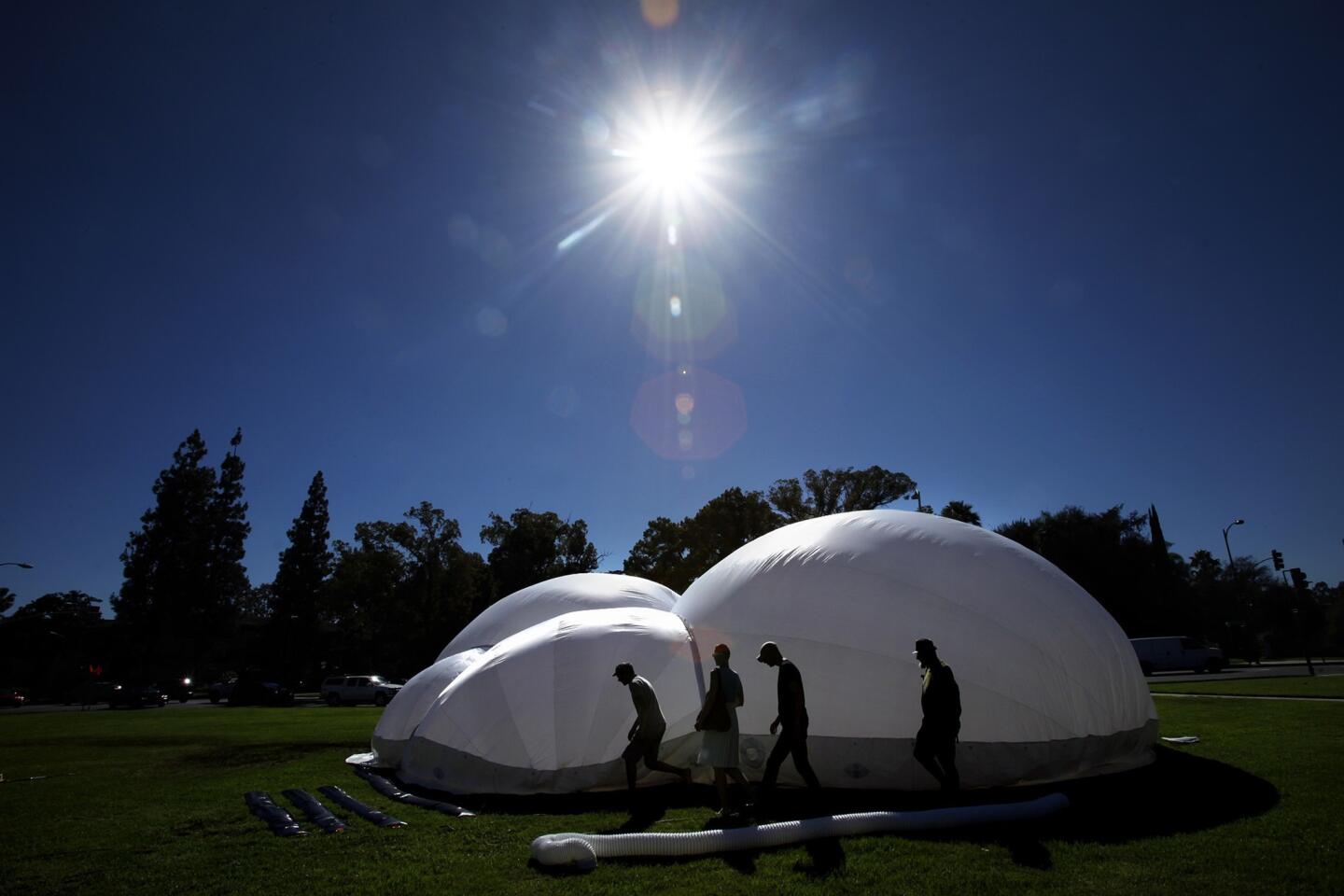Pasadena AxS Festival debuts Dutch artist Cocky Eek’s Sphaerae
- Share via
On a patch of velvety grass across the street from the Norton Simon Museum in Pasadena, a swath of white fabric lies unfurled on the ground, like a deflated parachute. This is Sphaerae -- and she is hungry.
Soon Sphaerae will be fed five bathtubs’ worth of water and a steady stream of air, pumped into her belly by two high-tech fans. And when she is full, Sphaerae will take flight.
“It’s exciting,” says Dutch artist and designer Cocky Eek, who created Sphaerae, a lightweight, inflatable performance space composed of five translucent domes that, when blown up, look something like a pile of glistening soap bubbles.
Eek, who’s visiting from Amsterdam, walks the perimeter of the milky white circle on the ground, 47 feet wide and 12 feet tall when inflated.
“It’s like a living organism, something that grows,” she says. “That moment when it goes up, it’s like seeing a butterfly or air balloon passing by -- light and spacious and breathing.”
Friday is Sphaerae’s North American debut at Pasadena’s AxS Festival 2014, a 17-day citywide event exploring the intersection of art and science. This year’s theme: Curiosity.
Sphaerae has been shown four times in Europe, including at a 2012 arts festival in Amsterdam and the 2013 Ars Electronica festival in Austria. The public art project typically stays up for just a few days, so the run in Pasadena will be its longest yet.
The luminous structure not only is air-conditioned but also sports an expensive sound system and can host 180-degree video projections. Throughout the AxS festival, it will house immersive, experimental art and performance events that explore light, sound and movement.
“This idea of a dome, to me, sort of reads as a nostalgic notion of utopia or this antiquated idea of the future,” says Robert Crouch, who curated Sphaerae’s event series for the Pasadena Arts Council. “I wanted to see if there were artists who’d be interested in pushing that read and coming up with other ideas of what this space could signify.”
More than 40 artists will appear inside Sphaerae during AxS, alone or in groups. Lectures will take place in the afternoons -- Theun Karelse will speak on mapping wild food sources with his app, Boskoi, and Marko Peljhan will talk about the global significance of Arctic geopolitical, natural and cultural spheres -- and two to four performances will be held at night. The structure can accommodate as many as 100 audience members sitting on the floor.
“It’s a little like a church because of the dome, it’s very spacious, and it becomes almost a ritual for the audience,” Eek says. “It feels very old, like a tent, but also futuristic -- sounds you’ve never heard before. It’s experimental and also very human.”
For more than 20 years Eek, a former fashion designer, has been working with lightweight materials and portable, often airborne structures in her art practice.
“It’s because I don’t have a car. I transport everything on a bike. I’m Dutch,” she jokes. “Seriously, I love that whole idea of creating big spaces from minimal material.”
Among the works being performed inside Sphaerae is a 30-minute piece by composer and cognitive scientist Bruno Louchouarn called “Sol Path.” Louchouarn worked with scientists at the Jet Propulsion Laboratory in La Canada Flintridge to turn navigational data from the Mars Rover into a musical score. It will play inside Sphaerae along with live viola music.
A somewhat “lower tech piece,” as Crouch calls it, by Julie Tolentino is called “Shatter + Center,” a five-hour work blending movement, performance art and sound put on by artists including dancers Taisha Paggett and Nick Duran, movement artist John Burtall and the sound artist collective Mata Noise.
Netherlands-based Russian artists Evelina Domnitch and Dmitry Gelfand will stage “10,000 Peacock Feathers in Foaming Acid,” a 45-minute piece in which they shoot multicolored lasers into soap bubbles. The artists composed a minimalistic score that Gelfand will manipulate, live, with his laptop.
Domnitch and Gelfand’s “10,000 Peacocks” partly inspired Eek to create Sphaerae, Eek says. In 2011 she saw the work live during an evening of performances in a planetarium in Amsterdam.
“I’d seen some of the works before, elsewhere, and I thought: ‘Wow, what a difference when you project on a curved surface,’” she says. “It was an amazing experience. Because of the curve, it has strange sound effects. It’s like a whispering dome.”
She created a clay model and developed the project with Synergetica Lab of Amsterdam and the Artscience Interfaculty program of the University of the Arts The Hague: the Royal Academy of Art and the Royal Conservatoire as co-producers. Eek eventually had it produced out of super-thin, semi-transparent nylon and PVC.
Inside, Sphaerae is illuminated by LED panels and light from performance projections. At night, when it isn’t in use, multicolored LED washes make it glow from within.
“People are wowed by it,” Eek says. “Even if the space is empty, people are wowed. The most common reaction is, ‘I wanna have a house like this!’ It’s completely white, and you just enter a state of dreaming.”
Adds Crouch: “Even empty, Sphaerae’s an interesting experience because it’s such a unique object. The design of it lends itself to unusual optical effects. It’s really something to see.”
Twitter: @debvankin
More to Read
The biggest entertainment stories
Get our big stories about Hollywood, film, television, music, arts, culture and more right in your inbox as soon as they publish.
You may occasionally receive promotional content from the Los Angeles Times.
